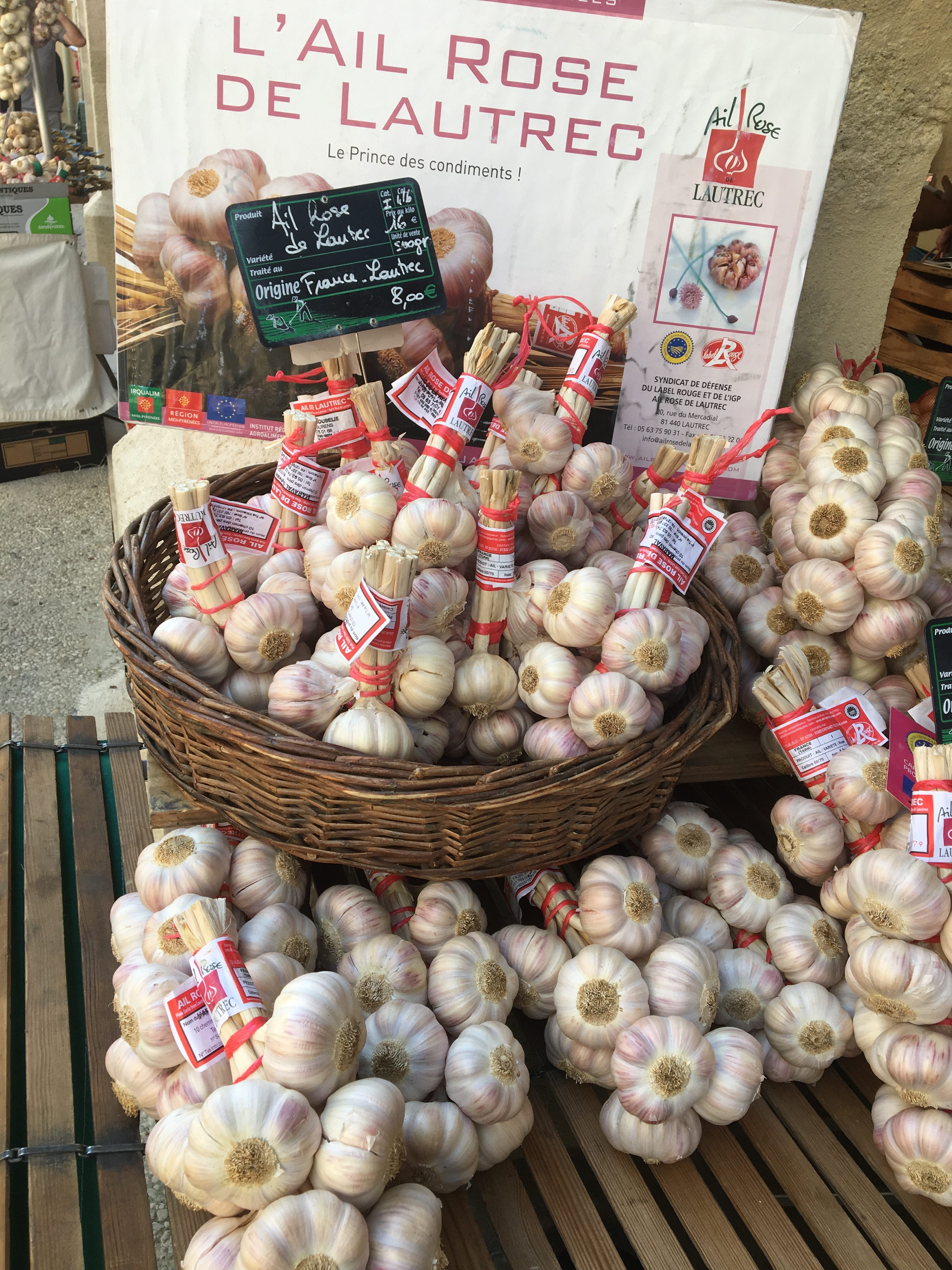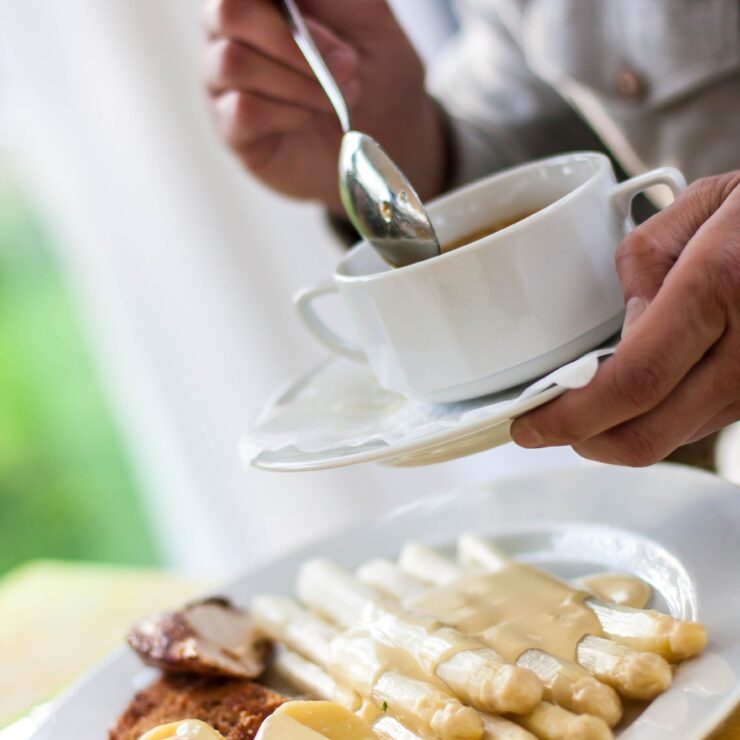I cannot possibly leave France without bringing back a beautiful, sturdy bunch of pink garlic (called a ‘manouille’ in French) as an edible souvenir.
HISTORY
From the very first time I tried Ail Rose de Lautrec, I fell in love with its refined flavor. Normal garlic is just plain boring and much too sharp. In my opinion, it masks and often overpowers the taste of food, rather than subtly enhancing it.
The story of pink garlic begins in the Middle Ages when it was first used in the department of Tarn. During the 19th century, it was produced in small quantities and sold at the local markets of Mazamet, Castres and Albi, but it wasn’t until the 1950s, however, that the cultivation of pink garlic really took off. In 1959, small-scale producers established the Syndicat de Défense du Label Rouge Ail Rose de Lautrec. By 1966, pink garlic had obtained the Label Rouge certification which guarantees optimum quality ensured by stringent production methods. Three decades later it received the Indication Géographique Protégée (IGP) label which guarantees origin.
PRODUCTION
Today there are 360 hectares producing between four hundred and eight hundred tons of pink garlic every year in the Tarn. The garlic is planted during the months of December and January and harvested at the end of June. After that, it is allowed a minimum drying time of two weeks before the roots are removed and the garlic is peeled down to the last layer of skin. The final step involves the calibration of the garlic and the packaging or tying into its signature bunches.
If stored in a dry, well-ventilated area with a temperature between 12°C to 15 °C, the garlic will remain firm and fragrant for at least six months and up to a year. On the first Friday and Saturday in August, Lautrec holds its annual pink garlic festival with all kinds of activities, music and plenty of tastings. If you ever get the chance to visit, the pink garlic soup is a must!




